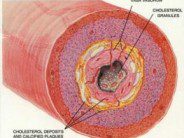Stem cell research has been marked by several technical and ethical difficulties. There has been both an ethical debate and legal battle over the type of stem cells that should be used in human research. Part of the legal battle has centered on the origin of stem cells, with several legal barriers being established for the use of embryonic stem cells. Alternative methods of obtaining pluripotent stem cells have been sought and there have been several recent advancements in this effort. Researchers, lead by Dr. Asa Abeliovich from Columbia University in New York City, have successfully directed the conversion of human skin fibroblasts into functional neurons. The results of their research were published online in the journal Cell. The researchers used a lentivirus vector to transduce the fibroblasts from familial Alzheimer’s disease patients or unaffected individuals with the transcription-regulating genes Ascl1, Bm2, Zic1, and Myt1. In addition to the transduction process, the researchers used extrinsic support factors to produce an 85% conversion rate into physiologically active neurons. They termed these neurons human-induced neuronal (hiN) cells. The converted neurons were found to express the neuronal markers MAP2 and Tau-1, and to behave in an electrophysiological manner that is found in naturally occurring neurons. The converted neurons exhibited sodium, calcium, and potassium channel transport and electrical activity that are found in typical glytamatergic neuronal cells. In addition, the converted neurons had resting membrane potentials that are found in normal neurons, further corroborating the functionality of the neurons. Human-induced neuronal cells from patients with familial Alzheimer’s disease, which contain the presenilin-1 or presenilin-2 mutations, had abnormalities of processing of the amyloid precursor protein (APP) and increased production of beta amyloid. This is a hallmark of Alzheimer’s dementia and shows that the fibroblast derived neurons retained the genetic and metabolic abnormality that is characteristic of Alzheimer’s dementia. Finally, the researchers transplanted the human-induced neuronal cells into the central nervous system of mice and demonstrated that these cells were able to integrate into the brains of the mice as functional neurons. The authors wrote, “A major goal in regenerative medicine is the facile generation of human neurons for cell replacement therapeutics or disease modeling… our findings demonstrate directed conversion of human fibroblasts to a neuronal phenotype and reveal cell type-selective pathology in [human-induced neuronal] cells derived from [familial Alzheimer’s disease] patients”. Future studies will focus on the possible use of these fibroblast derived human-induced neurons in the treatment of neurodegenerative diseases such as Alzheimer’s dementia and spinal cord injuries.
Reference:
Liang Qiang et al. “Directed Conversion of Alzheimer’s Disease Patient Skin Fibroblasts into Functional Neurons” Cell Volume 146, Issue 3, pp. 359-371 published August 5, 2011 doi: 10.1016/j.cell.2011.07.007










 DrSamGirgis.com is a blog about medicine, nutrition, health, wellness, and breaking medical news. At DrSamGirgis.com, the goal is to provide a forum for discussion on health and wellness topics and to provide the latest medical research findings and breaking medical news commentary.
DrSamGirgis.com is a blog about medicine, nutrition, health, wellness, and breaking medical news. At DrSamGirgis.com, the goal is to provide a forum for discussion on health and wellness topics and to provide the latest medical research findings and breaking medical news commentary.
{ 0 comments… add one now }